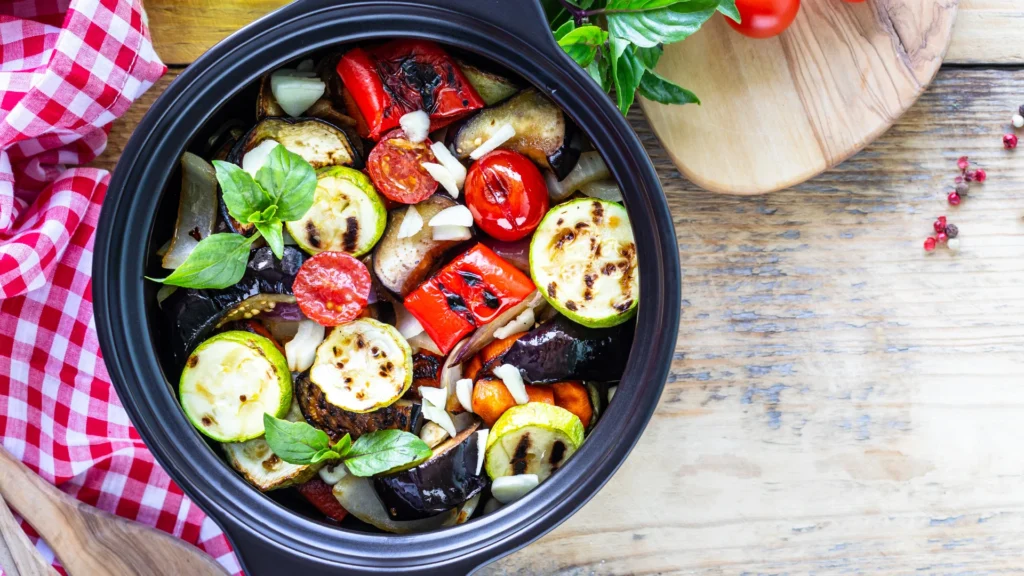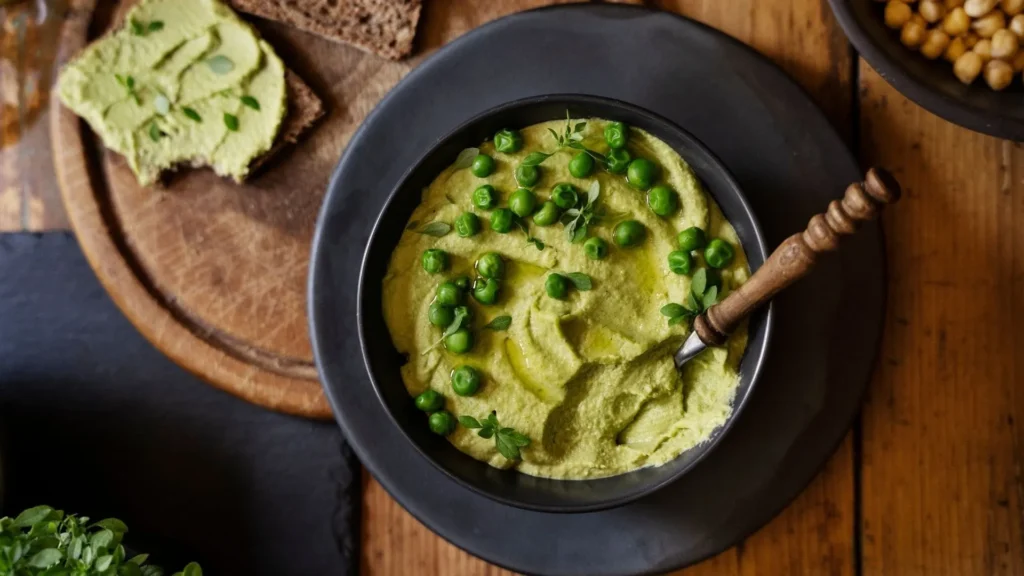Imagine this: the scent of caramelized onions wafting through the air, the delicate flavor of fresh herbs infusing your kitchen, and the vibrant colors of seasonal vegetables transforming your plate into a work of art. French cuisine is celebrated for its ability to take simple, humble ingredients and elevate them into masterpieces. With these 10 proven techniques, you can master the art of French vegetable recipes and bring the elegance of French cooking into your own home.
Table of Contents
Mastering French Vegetable Recipes
When it comes to French cooking, the focus is on quality and technique. By prioritizing fresh ingredients and mastering foundational methods, you can achieve extraordinary results. Let’s explore the secrets that make French vegetable dishes so exceptional.
1. Selecting the Freshest Ingredients for Authentic French Flavor
French chefs have a saying: “You’re only as good as your ingredients.” To create authentic French vegetable recipes, start by selecting the best produce.
- Seasonal and Local: Visit your local farmer’s market to find vegetables at their peak of ripeness. Look for vibrant colors, firm textures, and a natural aroma.
- Staple Vegetables: Stock up on quintessential French ingredients like zucchini, eggplant, leeks, fennel, and tomatoes.
- Pro Tip: Organic vegetables often have a superior taste and texture, making them ideal for French cooking.
2. The Art of Mirepoix: Building Flavor Foundations
The mirepoix (meer-pwah) is the backbone of many French dishes. This simple blend of diced onions, carrots, and celery creates a flavor base that’s rich and aromatic.
- Technique: Dice vegetables evenly to ensure uniform cooking. Sauté in butter or olive oil over medium heat until soft and fragrant.
- Uses: Mirepoix is the starting point for soups, stews, and sautéed dishes.
- Pro Tip: For a twist, experiment with adding garlic, leeks, or fennel to your mirepoix.
3. Perfect Ratatouille Every Time
Ratatouille is a classic French vegetable dish that celebrates simplicity and flavor. Here’s how to master it:
Ingredients
| Ingredient | Quantity |
|---|---|
| Zucchini | 2 medium |
| Eggplant | 1 large |
| Bell peppers | 2 |
| Tomatoes | 4 large |
| Olive oil | 4 tbsp |
| Garlic cloves | 3, minced |
| Herbs de Provence | 2 tsp |

Instructions
- Slice vegetables into uniform pieces.
- Heat olive oil in a large skillet and sauté garlic until fragrant.
- Layer vegetables in the skillet, seasoning with herbs and salt between each layer.
- Cover and simmer on low heat for 40 minutes, stirring occasionally.
Pro Tip: Serve ratatouille with crusty bread or as a side dish to roasted meats.
4. Provençal Herbs: Transforming Simple Dishes
French cooking is known for its delicate use of herbs. Provençal herbs, like thyme, rosemary, bay leaf, and parsley, are key to achieving authentic flavors.
- Fresh vs. Dried: Fresh herbs provide a brighter flavor, while dried herbs offer intensity. Use fresh herbs for garnishes and dried herbs for cooking.
- Pairing Herbs: Thyme and rosemary pair beautifully with roasted vegetables, while parsley works well with sautéed dishes.
Pro Tip: Tie fresh herbs together in a “bouquet garni” and remove before serving for a refined touch.
5. Braising: A Classic Technique for Vegetable Dishes
Braising involves slow-cooking vegetables in a small amount of liquid, resulting in tender, flavorful dishes.
- Technique: Brown vegetables in a hot pan, add liquid (broth, wine, or water), cover, and simmer until tender.
- Examples: Braised leeks, fennel, and artichokes.
- Pro Tip: Use a Dutch oven for even heat distribution and optimal results.
6. Soups and Potages: French Comfort in a Bowl
French vegetable soups are comforting, versatile, and packed with flavor. Two iconic examples are Potage Parmentier (leek and potato soup) and soupe au pistou (vegetable soup with basil paste).
Potage Parmentier Recipe
| Ingredient | Quantity |
| Leeks | 3 large |
| Potatoes | 4 medium |
| Butter | 2 tbsp |
| Heavy cream | 1/2 cup |
| Chicken stock | 4 cups |
Instructions
- Sauté sliced leeks in butter until soft.
- Add diced potatoes and chicken stock. Bring to a boil, then simmer until potatoes are tender.
- Blend until smooth and stir in heavy cream. Season with salt and pepper.
Pro Tip: Garnish with chopped chives or a drizzle of olive oil for an elegant finish.
7. Roasting Vegetables the French Way
Roasting intensifies the natural sweetness of vegetables, creating a caramelized, savory result.
- Best Vegetables: Carrots, parsnips, asparagus, and Brussels sprouts.
- Technique: Toss vegetables with olive oil, salt, and Provençal herbs. Roast at 400°F (200°C) until golden brown.
- Pro Tip: Use parchment paper for easy cleanup and even browning.
8. Gratin: Elevating Vegetables with Cheese and Cream
Gratins are a luxurious way to prepare vegetables. The combination of cream, cheese, and breadcrumbs creates a golden crust that’s hard to resist.
- Popular Dishes: Gratin Dauphinois with zucchini or Gratin de Pommes de Terre.
- Technique: Layer thinly sliced vegetables in a baking dish, add cream and cheese, and bake until bubbly and golden.
- Pro Tip: Use Gruyère or Comté cheese for authentic French flavor.
9. Salads: Simple, Elegant, and Packed with Flavor
French salads are known for their simplicity and balance. Salade Niçoise is a classic example that highlights fresh vegetables and a light dressing.
- Ingredients: Mixed greens, tomatoes, green beans, olives, and boiled potatoes.
- Dressing: A simple vinaigrette of olive oil, Dijon mustard, vinegar, and herbs.
- Pro Tip: Serve salads as a starter or a light main course.
10. Incorporating French Techniques into Everyday Cooking
You don’t need a professional kitchen to embrace French techniques. Here’s how to incorporate these methods into your daily routine:
- Use mirepoix as a base for soups and sautés.
- Roast seasonal vegetables for an easy, flavorful side dish.
- Experiment with Provençal herbs to elevate your recipes.
Pro Tip: Practice makes perfect. Start with simple dishes and gradually try more complex recipes.
Conclusion
French cuisine teaches us that vegetables can be the star of any meal. By mastering these 10 techniques, you’ll transform your cooking and create dishes that are both elegant and delicious. Whether you’re preparing a hearty ratatouille or a light Salade Niçoise, the key is to cook with care and attention to detail.
Now it’s your turn: Choose one technique and try it out today. Share your results or favorite French vegetable recipes in the comments below. Bon appétit!
FAQ Section
Q: What vegetables are commonly used in French cuisine? A: French cuisine often features zucchini, eggplant, tomatoes, leeks, fennel, and asparagus for their versatility and flavor.
Q: What is the best way to season French vegetable dishes? A: Fresh herbs like thyme, rosemary, and parsley, combined with olive oil and sea salt, are the keys to authentic French seasoning.
Q: Are French vegetable recipes suitable for vegetarians? A: Absolutely! Many French vegetable dishes, such as ratatouille and Potage Parmentier, are naturally vegetarian and can be adapted for vegan diets as well.
Q: How can I make French dishes healthier? A: Use less cream and cheese, opt for olive oil, and focus on roasting or steaming vegetables to retain nutrients.
Q: Can I prepare French vegetable recipes ahead of time? A: Yes, many dishes like ratatouille and gratins can be made in advance and reheated, making them perfect for meal prep or entertaining.
